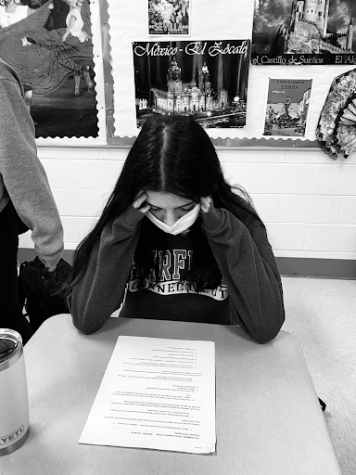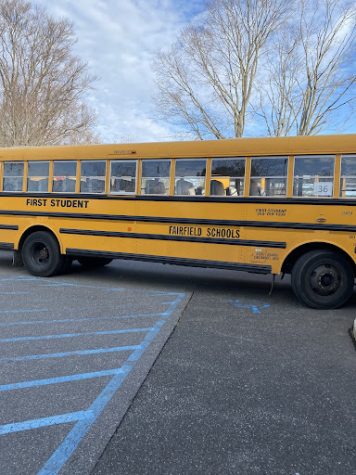School Counseling’s Misconceptions and Stigmas
In the post-pandemic world, it is apparent that the quarantine has taken a toll on people’s mental health, especially high schoolers. Data from the Center for Disease Control and Prevention (CDC) suggests that COVID-19 has negatively affected the mental health of students, specifically through school closures and social isolation.
Among the most prevalent mental illnesses in adolescents, anxiety and depression can also be some of the most debilitating . As reported by the Connecticut Department of Public Health, 15% of deaths among teenagers from ages 15-19 are by suicide.
While outpatient therapy can be a helpful aid for some students, the costs of sessions are not always reasonable for certain incomes, ranging from $60 to $250 per hour. Thus, some may not be able to find the proper outlet for their mental health.
At Fairfield Ludlowe High School, the counseling center, consisting of psychologists, social workers, and a student assistant counselor, is another possible outlet. The team works on a number of different problems, including mental health in students after the pandemic.
“COVID has caused many teens to lose valuable learning time and socialization, which may have caused a gap in skills and exposure, leading to mental health concerns,” as stated by Christina Darin, a school psychologist.
A part of their work with COVID-19 is filling the social skills gap created by the pandemic. The team’s current goal is “really building up students’ resiliency, and how to manage when things go wrong. And really, how to relate to others,” according to Vanessa Montorsi, the Director of Pupil Services and Counseling.
Conflicts between students and the counseling center come up in time management, when it comes between choosing mental health or education. Sophie Pennock-Collins, a high school sophomore who struggles with anxiety, said if she had to use the counseling center, she would most likely, “keep putting it off, because I’m busy and don’t want to miss class.”
Evidently, midterms and finals are the same time when students’ stress is the highest. “Those are the times students experience more stress and anxiety,” Darin affirmed. While stress is the most important to manage when it’s high, students seem to not want to miss more classes than needed.
Furthermore, there will always be factors in mental health services surrounding stigma. “If it’s a negative stigma, you know, people shy away from it,” Montorsi voiced, “I think there’s also sometimes a pride thing with people, and I don’t mean just with students, even adults have this.”
However, the counseling center believes that students are better with talking about mental health than before. “I think what’s really cool about [this] generation is that more students are actually being a little more open and vulnerable about how they’re feeling,” Montorsi elaborated, “so that’s fantastic.”
A misconception often found between students and the counseling center is the element of trust. Confidentiality is a key aspect of therapy, and similarly to doctors, therapists have a hippocratic oath to keep their patient safe by doing whatever they can.
“I think what students need to know: we are not going to divulge anything that a student says unless it’s one of three things. We would never tell their parent or another staff member or anybody else, unless the student divulges that they are hurting themselves, they’re hurting somebody else, or somebody else is hurting them,” Montorsi stated.
Montorsi further stated that students might not know what the Health Insurance Portability and Accountability Act (HIPAA), the act regarding confidentiality, is. HIPAA pertains to anything health related, not just the topic of mental health. In the case of two mental health coordinators working for the same patient, the act allows the signing off of the patient’s information between the two.
Most importantly for students to know, HIPAA prohibits the sharing of information unless a student adamantly signs off on it, or it is one of the three possibilities Montorsi stated.
To answer student’s questions on confidentiality, no information is shared unless it is for the safety of a student.
Really, from both perspectives of the students and the counseling center alike, both want improvements in the same area: exposure and more services.
“In a perfect world, I would love to see another psychologist or social worker hired. The need for mental health support and services is so large, that it becomes challenging at times,” Darin explained.
Pennock-Collins thinks similarly, “School psychologists have a lot on their plates.” The best solution for the higher need for mental health support seems to be more services or counselors in the school.
More so, the FLHS counseling center is striving for exposure. “We try very hard to push into all of the ninth grade health classes every year to introduce ourselves and let them know about the services we offer,” Darin stated, “With that being said, I think a lot of students are surprised to hear that we have school psychologists and social workers in the building.
All information on the counseling center can be found under the “Departments” tab on the Fairfield Ludlowe website. Students can find a list of all the counselors, psychologists, and social workers there.
The counseling center also provides additional services for students, including occasional in-school therapy dogs, and a virtual calming room on their website. The virtual room provides live-animal cams, guided meditations, and nature sounds and music for relaxation.
“We’re trying to get that word out there,” Montorsi reassured.
As mental health struggles among teenagers rise, many are being more open and vulnerable. That should be rewarded with the support of counseling.

This is Libby's third year writing for Prospect, and her first year as Entertainment Editor.











![[Protest Tbilisi April 2024] by [Jelger Groeneveld] is licensed under [CC BY 2.0].](https://flhsprospect.com/wp-content/uploads/2025/01/Screenshot-2025-01-29-151213-1-600x449.png)